How to Write a Biography: A Step-by-Step Guide

By Hannah Yang


Table of Contents
What is a biography, a step-by-step guide to writing a biography, tips for how to write a great biography, conclusion on how to write a biography.
Writing a biography can be a rewarding endeavor, but it can also feel a bit daunting if you’ve never written one before.
Whether you’re capturing the life story of a famous person, a family member, or even yourself, creating a compelling biography involves a mix of thorough research, narrative skill, and a personal touch.
So, how exactly do you write a successful biography?
In this guide, we’ll break down the essentials to help you craft a biography that’s both informative and engaging, as well as our top tips for how to make it truly shine.
A biography is a detailed account of someone’s life.
A well-written biography needs to be objective and accurate. At the same time, it needs to depict more than just the basic facts like birth, education, work, relationships, and death—it should also portray the subject’s personal experience of those events.
So, in addition to being a good researcher, a good biographer also needs to be a good storyteller. You should provide insights into the subject’s personality, motivations, and impact on the world around them.
What’s the Difference Between a Biography, a Memoir, and an Autobiography?

Understanding the distinctions between different genres of life writing is crucial for both writers and readers. Here’s a quick breakdown of the key differences between a biography and other related genres.
Biography: a detailed account of a person’s life, usually written in the third-person POV and supported by extensive research
Autobiography: a self-written account of the author’s own life, usually written in the first person POV and following a chronological order
Memoir: a collection of memories that an individual writes about moments or events that took place in their life, usually in the first person POV and in an introspective and personal way
Narrative nonfiction: a book that tells true stories using the techniques of fiction writing, such as character development, narrative arc, and detailed settings
Best Biography Examples to Study
The best way to learn how to write well is to read other successful books within the genre you’re writing.
Here are five great biographies to add to your reading list. For a longer list, check out our article on the 20 best biographies to read .
Unbroken: A World War II Story of Survival, Resilience, and Redemption by Laura Hillenbrand: the incredible true story of Louis Zamperini, an Olympian and World War II hero.
Steve Jobs by Walter Isaacson: a comprehensive and engaging account of the Apple co-founder’s life.
Alexander Hamilton by Ron Chernow: the biography that inspired the hit musical, providing a deep dive into Hamilton ’ s life and legacy.
Savage Beauty: The Life of Edna St. Vincent Millay by Nancy Milford: a nuanced story that uncovers the family connection between the three Millay sisters and their mother.
Barracoon by Zora Neale Hurston: the story of Cudjo Lewis, one of the last-known survivors of the Atlantic slave trade.
As with writing any book, writing a biography is a marathon, not a sprint. It’s easier to think of it as a series of smaller steps than as one big challenge to tackle.
Let’s break down the process step by step.
1. Choose Your Subject
Decide who you want to write about. It could be a well-known celebrity, a historical figure, or someone close to you.
In addition to figuring out who you’re writing about, this is also the step where you figure out why you want to write about them. Why is this a story worth telling, and what makes you interested in it?
Maybe the subject of your biography overcame major hardships in life to achieve success, and that story will inspire others facing similar struggles. Or maybe they made a really unique contribution to the world that not enough people know about, and you want to shine a bigger spotlight on that impact.
Knowing why you’re telling this story will help you make the right decisions about how to research, outline, draft, and edit your biography.
2. Identify Your Target Audience
Understanding your target audience is a crucial step in writing a good biography. You should tailor your biography to the interests and knowledge level of your audience.
A biography for a general audience will differ from one written for experts in a particular field. For example, two biographies about Emily Dickinson would be vastly different if one is written for young children and the other is written for adult poets.
3. Conduct Research

Dive deep into your research. Use a variety of sources to get a well-rounded view of your subject’s life. Take detailed notes and organize your findings.
Gather as much information as you can about your subject. This includes primary sources like interviews, letters, and diaries, as well as secondary sources such as books, articles, and documentaries.
Here are some primary sources to look for:
Letters and diaries: These provide intimate insights into the subject’s thoughts, feelings, and daily life, and can often be found in family archives, libraries, and historical societies.
Birth, marriage, and death certificates: These documents can provide crucial dates and familial relationships.
Census data: Census records can provide demographic information and track changes over time.
Property records: These can reveal where the subject lived and owned property.
Employment and school records: These records offer formalized insights into the subject’s education and career.
Military records: If applicable, military records can provide information on service, ranks, and honors.
Photos and videos: Look for photographs and videos in public libraries, historical societies, online databases like the Library of Congress, and family photo albums.
Historical newspapers: Access archives of local and national newspapers for articles, interviews, and obituaries related to the subject.
Digital archives: Use online resources like ProQuest, Chronicling America, and newspaper databases available through public libraries.
You can also look for secondary sources, which provide more context and perspective, such as:
Existing biographies: Search for existing biographies and books about the subject or their era. How does your project stand out from the crowd?
Academic articles and papers: Access journals through university libraries, which often have extensive collections of scholarly articles.
Documentaries and biographical films: You can often find these on streaming services or public television archives.
Websites and blogs: Look for reputable websites and blogs dedicated to the subject or related fields.
Social media platforms: The things people say on social media can offer insights into public perception about your subject.
Finally, you can also conduct your own interviews. Talk to the subject if they’re still alive, as well as their friends, family, and colleagues. You can ask them for personal anecdotes to add more color to your book, or more information to fill in any gaps in your knowledge.
4. Ask Engaging Questions

Great biographers start from a place of curiosity. Before you start writing, you should know the answers to the following questions:
What makes your subject’s story worth telling?
What was your subject’s childhood like?
What were your subject’s early interests and hobbies?
What level of education did your subject achieve and where did they study?
What was your subject’s personality like?
What were their beliefs and values?
How did your subject’s personality and beliefs change over time?
What were the major turning points in your subject’s life?
How was your subject affected by the major political, cultural, and societal events that occurred throughout their life?
What did their career path look like?
What were their major accomplishments?
What were their major failures?
How did they contribute to their field, their country, or their community?
Were they involved in any major controversies or scandals?
Who were the most important people in the subject’s life, such as friends, partners, or mentors?
If the subject is no longer living, how did they pass away?
What lasting impact did the subject leave behind?
5. Create an Outline
An outline helps you structure your biography. You can write an extensive outline that includes every scene you need to write, or you can keep it simple and just make a list of high-level bullet points—whatever works best for your writing process.
The best structure to use will depend on the shape of the story you’re trying to tell. Think about what your subject’s life looked like and what core messages you’re trying to leave the reader with.
If you want to keep things simple, you can simply go in chronological order. Tell the story from the birth of your subject to the death of your subject, or to the present day if this person is still living.
You can also use a more thematically organized structure, similar to what you would find on a Wikipedia page. You could break your book down into sections such as major life events, personal relationships, core accomplishments, challenges, and legacy.
Or, if you want to be more creative, you can use a nonlinear story structure, jumping between recent events and older flashbacks based on which events feel thematically tied together.
6. Write Your First Draft
Now that you have an outline, it’s time to sit down and write your first draft.
Your opening chapters should hook the reader and give a preview of what’s to come. Highlight a compelling aspect of the subject’s life to draw readers in.
In your middle chapters, cover all the key events you need to include about your subject’s life and weave in themes and anecdotes that reveal their personality and impact.
In your final chapters, wrap up your biography by summarizing the subject’s legacy and reflecting on their overall significance. This provides closure and leaves the reader with a lasting impression.
Remember that it’s okay if your first draft isn’t perfect. Your goal is simply to get words down on the page so you have something to edit.
7. Make Developmental Revisions
Now that you’re done with your first draft, it’s time to make big-picture revisions.
Review your biography for coherence and organization. Does the overall structure make sense? Are there any arcs or themes that aren’t given enough attention? Are there scenes or chapters that don’t need to be included?
8. Make Line Edits
Once you’ve completed your developmental edits, it’s time to make smaller line edits. This is your time to edit for grammar, punctuation, and style.
Make sure you keep a consistent voice throughout the book. Some biographies feel more conversational and humorous, while others are serious and sophisticated.
To get through your editing faster, you can run your manuscript through ProWritingAid , which will automatically catch errors, point out stylistic inconsistencies, and help you rephrase confusing sentences.
Don’t be afraid to ask others for feedback. No good book is written in a vacuum, and you can ask critique partners and beta readers to help you improve your work.
What makes a great biography stand out from the rest? Here are our best tips for how to take your manuscript to the next level.
Tip 1: Focus on Key Themes
Identify the central themes or patterns in the subject’s life—the ones that will really make readers keep thinking about your book. These could be related to the subject’s struggles, achievements, relationships, or values.
Tip 2: Balance Facts and Narrative
A good biography should read like a story, not a list of facts.
Use narrative techniques like imagery, character development, and dialogue to create a compelling and coherent story.
Tip 3: Add Your Own Perspective
Biographies need to be objective, but that doesn’t mean the author has to be entirely invisible. Including your own perspective can make the biography relatable and engaging.
Letting your voice shine can help illustrate the subject ’ s character and bring their story to life. It will also help make your biography stand out from the crowd.
Tip 4: Create a Timeline
Organize the key events of the subject’s life in chronological order. This will help you see the bigger picture and ensure you cover all important aspects.
Tip 5: Be Considerate
Because biographies are about real people, you should be mindful of who will be impacted by the story you’re telling, especially if your subject is still alive or still has living family members.
If the subject is still alive, ask them for permission to tell their story before you start writing. This also helps ensure that you don’t get sued.
Writing a biography is a journey of discovery, not just about the subject, but also about the craft of storytelling.
By combining thorough research, a clear structure, and engaging narrative techniques, you can create a biography that not only informs but also inspires and captivates your readers.
Don’t forget to run your manuscript through ProWritingAid so you can make sure your prose is as polished as possible.
Now, pick your subject, gather your resources, and start writing—there’s a fascinating story waiting to be told.
Good luck, and happy writing!

Write like a bestselling author
Love writing? ProWritingAid will help you improve the style, strength, and clarity of your stories.
Hannah Yang
Hannah Yang is a speculative fiction writer who writes about all things strange and surreal. Her work has appeared in Analog Science Fiction, Apex Magazine, The Dark, and elsewhere, and two of her stories have been finalists for the Locus Award. Her favorite hobbies include watercolor painting, playing guitar, and rock climbing. You can follow her work on hannahyang.com, or subscribe to her newsletter for publication updates.
Get started with ProWritingAid
Visit our Help Center or let's stay in touch via:
- If the subject does not give you permission to write the biography, you may want to choose a different subject. If you decide to publish the biography without the subject’s permission, you may be susceptible to legal action by the subject.
- If the subject is no longer alive, you obviously do not need to ask permission to write about them.

- You may create research questions to help focus your research of the subject, such as, What do I find interesting about the subject? Why is this subject important to readers? What can I say that is new about the subject? What would I like to learn more about?

- For in person interviews, record them with a tape recorder or a voice recorder on your computer or phone.
- You may need to interview the subject and others several times to get the material you need.

- You may also want to visit areas where the subject made a major decision or breakthrough in their life. Being physically in the area can give you a sense of how the subject might have felt and help you write their experiences more effectively.

- When researching the time period ask yourself: What were the social norms of that time? What was going on economically and politically? How did the social and political climate affect the subject?

- You may also include historical events or moments that affected the subject on the timeline. For example, maybe there was a conflict or civil war that happened during the person’s life that affected their life.
Writing the Biography

- You may end up focusing on particular areas of the person’s life. If you do this, work through a particular period in the person’s life chronologically.

- For example, you may have a thesis statement about focusing on how the person impacted the civil rights movement in America in the 1970s. You can then make sure all your content relates back to this thesis.

- Flashbacks should feel as detailed and real as present day scenes. Use your research notes and interviews with the subject to get a good sense of their past for the flashbacks.
- For example, you may jump from the person’s death in the present to a flashback to their favorite childhood memory.

- For example, you may focus on the person’s accomplishments in the civil rights movement. You may write a whole section about their contributions and participation in major civil rights marches in their hometown.

- For example, you may notice that the person’s life is patterned with moments of adversity, where the person worked hard and fought against larger forces. You can then use the theme of overcoming adversity in the biography.

- For example, you may note how you see parallels in the person’s life during the civil rights movement with your own interests in social justice. You may also commend the person for their hard work and positive impact on society.
Polishing the Biography

- Revise the biography based on feedback from others. Do not be afraid to cut or edit down the biography to suit the needs of your readers.

- Having a biography riddled with spelling, grammar, and punctuation errors can turn off your readers and result in a poor grade if you are handing in the text for a class.

- If the biography is for a class, use MLA , APA , or Chicago Style citations based on the preferences of your instructor.
Biography Help

Community Q&A
- Be careful when publishing private or embarrassing information, especially if the person is not a celebrity. You may violate their "Right of Privacy" or equivalent. Thanks Helpful 31 Not Helpful 5
- Have the sources to back up your statements about the subject's life. Untruthful written statements can lead to litigation. If it is your opinion, be clear that it is such and not fact (although you can support your opinion with facts). Thanks Helpful 16 Not Helpful 15

You Might Also Like

- ↑ https://grammar.yourdictionary.com/writing/how-to-write-a-biography.html
- ↑ https://au.indeed.com/career-advice/career-development/how-to-write-a-bio
- ↑ https://www.writersdigest.com/writing-articles/3-tips-for-writing-successful-flashbacks
- ↑ https://www.grammarly.com/blog/how-to-write-bio/
- ↑ https://writingcenter.unc.edu/tips-and-tools/editing-and-proofreading/
- ↑ https://www.plagiarism.org/article/how-do-i-cite-sources
About This Article

Before you write a biography, gather as much information about the subject that you can from sources like newspaper articles, interviews, photos, existing biographies, and anything else you can find. Write the story of that person’s life, including as much supporting detail as you can, including information about the place and time where the person lived. Focus on major events and milestones in their life, including historical events, marriage, children, and events which would shape their path later in life. For tips from our reviewer on proofreading the biography and citing your sources, keep reading! Did this summary help you? Yes No
- Send fan mail to authors
Reader Success Stories
Jan 24, 2021
Did this article help you?

Janis Hendrick
Oct 10, 2018
Teresa Bradley
Sep 15, 2020
Apr 18, 2016
Latanya Foster
Apr 26, 2016

Featured Articles

Trending Articles

Watch Articles

- Terms of Use
- Privacy Policy
- Do Not Sell or Share My Info
- Not Selling Info
Don’t miss out! Sign up for
wikiHow’s newsletter
TRY OUR FREE APP
Write your book in Reedsy Studio. Try the beloved writing app for free today.
Craft your masterpiece in Reedsy Studio
Plan, write, edit, and format your book in our free app made for authors.

Blog • Perfecting your Craft
Posted on Jun 30, 2023
How to Write a Biography: A 7-Step Guide [+Template]
About the author.
Reedsy's editorial team is a diverse group of industry experts devoted to helping authors write and publish beautiful books.
About Dario Villirilli
Editor-in-Chief of the Reedsy blog, Dario is a graduate of Mälardalen University. As a freelance writer, he has written for many esteemed outlets aimed at writers. A traveler at heart, he can be found roaming the world and working from his laptop.
From time to time, nonfiction authors become so captivated by a particular figure from either the present or the past, that they feel compelled to write an entire book about their life. Whether casting them as heroes or villains, there is an interesting quality in their humanity that compels these authors to revisit their life paths and write their story.
However, portraying someone’s life on paper in a comprehensive and engaging way requires solid preparation. If you’re looking to write a biography yourself, in this post we’ll share a step-by-step blueprint that you can follow.
How to write a biography:
1. Seek permission when possible
2. research your subject thoroughly, 3. do interviews and visit locations, 4. organize your findings, 5. identify a central thesis, 6. write it using narrative elements, 7. get feedback and polish the text.
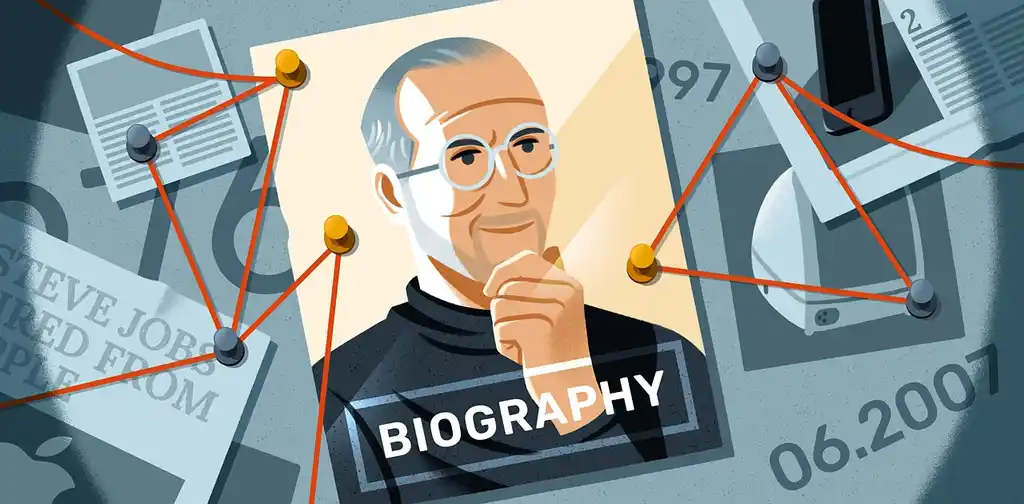
FREE RESOURCE
Biography Outline Template
Craft a satisfying story arc for your biography with our free template.
While you technically don’t need permission to write about public figures (or deceased ones), that doesn't guarantee their legal team won't pursue legal action against you. Author Kitty Kelley was sued by Frank Sinatra before she even started to write His Way , a biography that paints Ol Blue Eyes in a controversial light. (Kelley ended up winning the lawsuit, however).

Whenever feasible, advise the subject’s representatives of your intentions. If all goes according to plan, you’ll get a green light to proceed, or potentially an offer to collaborate. It's a matter of common sense; if someone were to write a book about you, you would likely want to know about it well prior to publication. So, make a sincere effort to reach out to their PR staff to negotiate an agreement or at least a mutual understanding of the scope of your project.
At the same time, make sure that you still retain editorial control over the project, and not end up writing a puff piece that treats its protagonist like a saint or hero. No biography can ever be entirely objective, but you should always strive for a portrayal that closely aligns with facts and reality.
If you can’t get an answer from your subject, or you’re asked not to proceed forward, you can still accept the potential repercussions and write an unauthorized biography . The “rebellious act” of publishing without consent indeed makes for great marketing, though it’ll likely bring more headaches with it too.
✋ Please note that, like other nonfiction books, if you intend to release your biography with a publishing house , you can put together a book proposal to send to them before you even write the book. If they like it enough, they might pay you an advance to write it.

Book Proposal Template
Craft a professional pitch for your nonfiction book with our handy template.
Once you’ve settled (or not) the permission part, it’s time to dive deep into your character’s story.
Deep and thorough research skills are the cornerstone of every biographer worth their salt. To paint a vivid and accurate portrait of someone's life, you’ll have to gather qualitative information from a wide range of reliable sources.
Start with the information already available, from books on your subject to archival documents, then collect new ones firsthand by interviewing people or traveling to locations.
Browse the web and library archives

Put your researcher hat on and start consuming any piece on your subject you can find, from their Wikipedia page to news articles, interviews, TV and radio appearances, YouTube videos, podcasts, books, magazines, and any other media outlets they may have been featured in.
Establish a system to orderly collect the information you find 一 even seemingly insignificant details can prove valuable during the writing process, so be sure to save them.
Depending on their era, you may find most of the information readily available online, or you may need to search through university libraries for older references.
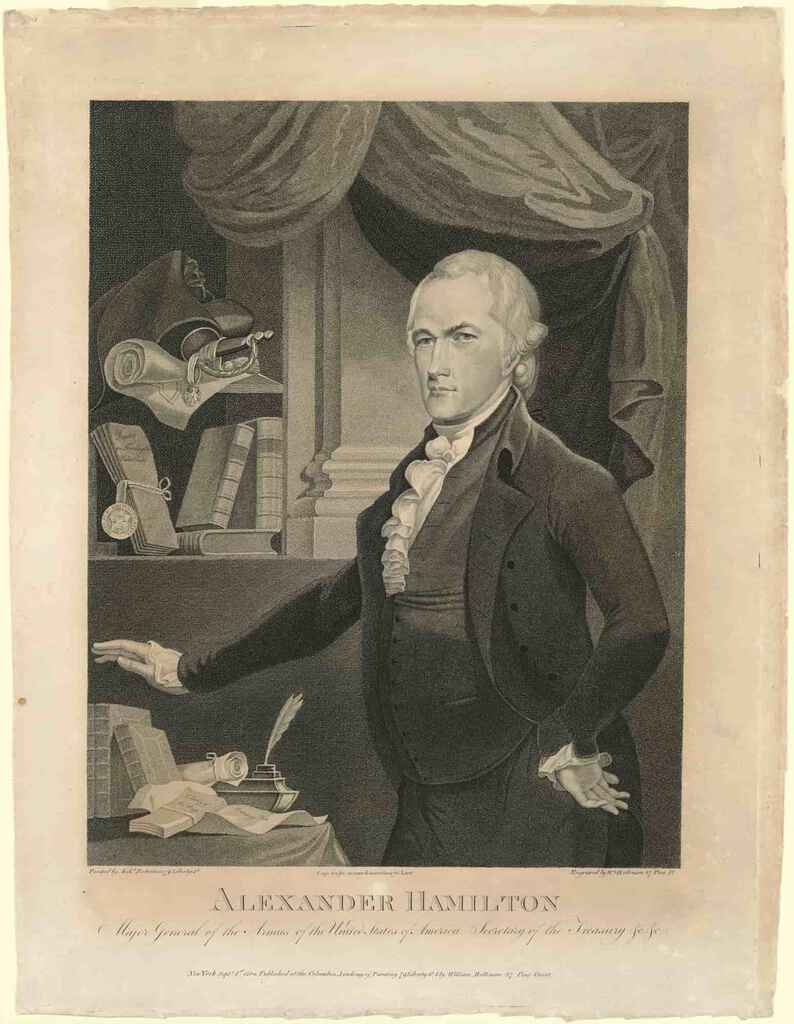
For his landmark biography of Alexander Hamilton, Ron Chernow spent untold hours at Columbia University’s library , reading through the Hamilton family papers, visiting the New York Historical Society, as well as interviewing the archivist of the New York Stock Exchange, and so on. The research process took years, but it certainly paid off. Chernow discovered that Hamilton created the first five securities originally traded on Wall Street. This finding, among others, revealed his significant contributions to shaping the current American financial and political systems, a legacy previously often overshadowed by other founding fathers. Today Alexander Hamilton is one of the best-selling biographies of all time, and it has become a cultural phenomenon with its own dedicated musical.
Besides reading documents about your subject, research can help you understand the world that your subject lived in.
Try to understand their time and social environment
Many biographies show how their protagonists have had a profound impact on society through their philosophical, artistic, or scientific contributions. But at the same time, it’s worth it as a biographer to make an effort to understand how their societal and historical context influenced their life’s path and work.
An interesting example is Stephen Greenblatt’s Will in the World . Finding himself limited by a lack of verified detail surrounding William Shakespeare's personal life, Greenblatt, instead, employs literary interpretation and imaginative reenactments to transport readers back to the Elizabethan era. The result is a vivid (though speculative) depiction of the playwright's life, enriching our understanding of his world.

Many readers enjoy biographies that transport them to a time and place, so exploring a historical period through the lens of a character can be entertaining in its own right. The Diary of Samuel Pepys became a classic not because people were enthralled by his life as an administrator, but rather from his meticulous and vivid documentation of everyday existence during the Restoration period.
Once you’ve gotten your hands on as many secondary sources as you can find, you’ll want to go hunting for stories first-hand from people who are (or were) close to your subject.
With all the material you’ve been through, by now you should already have a pretty good picture of your protagonist. But you’ll surely have some curiosities and missing dots in their character development to figure out, which you can only get by interviewing primary sources.
Interview friends and associates
This part is more relevant if your subject is contemporary, and you can actually meet up or call with relatives, friends, colleagues, business partners, neighbors, or any other person related to them.
In writing the popular biography of Steve Jobs, Walter Isaacson interviewed more than one hundred people, including Jobs’s family, colleagues, former college mates, business rivals, and the man himself.
🔍 Read other biographies to get a sense of what makes a great one. Check out our list of the 30 best biographies of all time , or take our 30-second quiz below for tips on which one you should read next.
Which biography should you read next?
Discover the perfect biography for you. Takes 30 seconds!
When you conduct your interviews, make sure to record them with high quality audio you can revisit later. Then use tools like Otter.ai or Descript to transcribe them 一 it’ll save you countless hours.
You can approach the interview with a specific set of questions, or follow your curiosity blindly, trying to uncover revealing stories and anecdotes about your subject. Whatever your method, author and biography editor Tom Bromley suggests that every interviewer arrives prepared, "Show that you’ve done your work. This will help to put the interviewee at ease, and get their best answers.”
Bromley also places emphasis on the order in which you conduct interviews. “You may want to interview different members of the family or friends first, to get their perspective on something, and then go directly to the main interviewee. You'll be able to use that knowledge to ask sharper, more specific questions.”
Finally, consider how much time you have with each interviewee. If you only have a 30-minute phone call with an important person, make it count by asking directly the most pressing questions you have. And, if you find a reliable source who is also particularly willing to help, conduct several interviews and ask them, if appropriate, to write a foreword as part of the book’s front matter .
Sometimes an important part of the process is packing your bags, getting on a plane, and personally visiting significant places in your character’s journey.

Visit significant places in their life
A place, whether that’s a city, a rural house, or a bodhi tree, can carry a particular energy that you can only truly experience by being there. In putting the pieces together about someone’s life, it may be useful to go visit where they grew up, or where other significant events of their lives happened. It will be easier to imagine what they experienced, and better tell their story.
In researching The Lost City of Z , author David Grann embarked on a trek through the Amazon, retracing the steps of British explorer Percy Fawcett. This led Grann to develop new theories about the circumstances surrounding the explorer's disappearance.
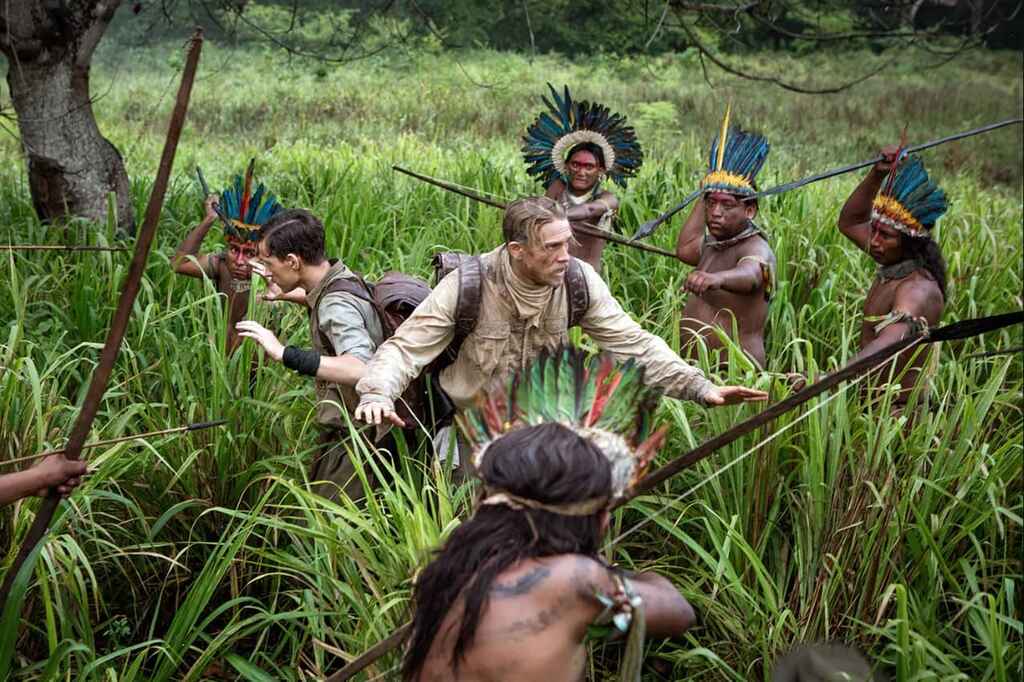
Hopefully, you won’t have to deal with jaguars and anacondas to better understand your subject’s environment, but try to walk into their shoes as much as possible.
Once you’ve researched your character enough, it’s time to put together all the puzzle pieces you collected so far.
Take the bulk of notes, media, and other documents you’ve collected, and start to give them some order and structure. A simple way to do this is by creating a timeline.
Create a chronological timeline
It helps to organize your notes chronologically 一 from childhood to the senior years, line up the most significant events of your subject’s life, including dates, places, names and other relevant bits.
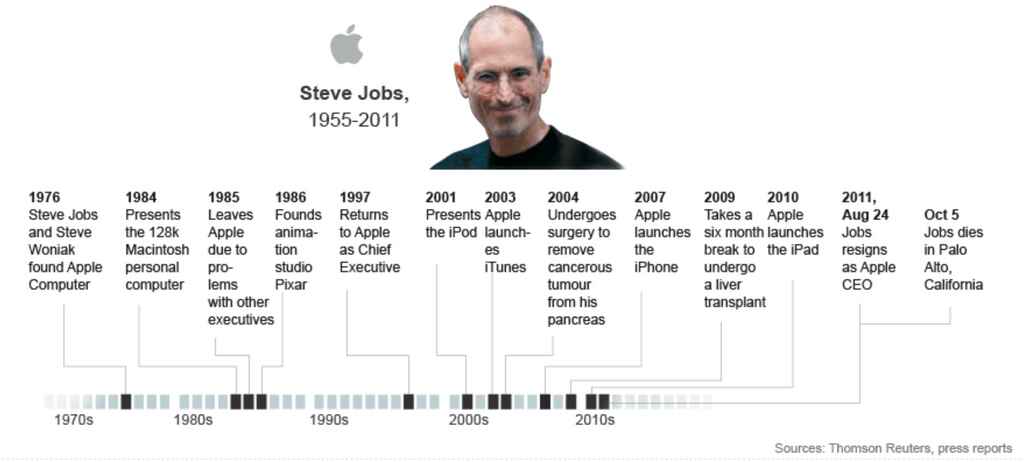
You should be able to divide their life into distinct periods, each with their unique events and significance. Based on that, you can start drafting an outline of the narrative you want to create.
Draft a story outline
Since a biography entails writing about a person’s entire life, it will have a beginning, a middle, and an end. You can pick where you want to end the story, depending on how consequential the last years of your subject were. But the nature of the work will give you a starting character arc to work with.
To outline the story then, you could turn to the popular Three-Act Structure , which divides the narrative in three main parts. In a nutshell, you’ll want to make sure to have the following:
- Act 1. Setup : Introduce the protagonist's background and the turning points that set them on a path to achieve a goal.
- Act 2. Confrontation : Describe the challenges they encounter, both internal and external, and how they rise to them. Then..
- Act 3. Resolution : Reach a climactic point in their story in which they succeed (or fail), showing how they (and the world around them) have changed as a result.
Only one question remains before you begin writing: what will be the main focus of your biography?
Think about why you’re so drawn to your subject to dedicate years of your life to recounting their own. What aspect of their life do you want to highlight? Is it their evil nature, artistic genius, or visionary mindset? And what evidence have you got to back that up? Find a central thesis or focus to weave as the main thread throughout your narrative.
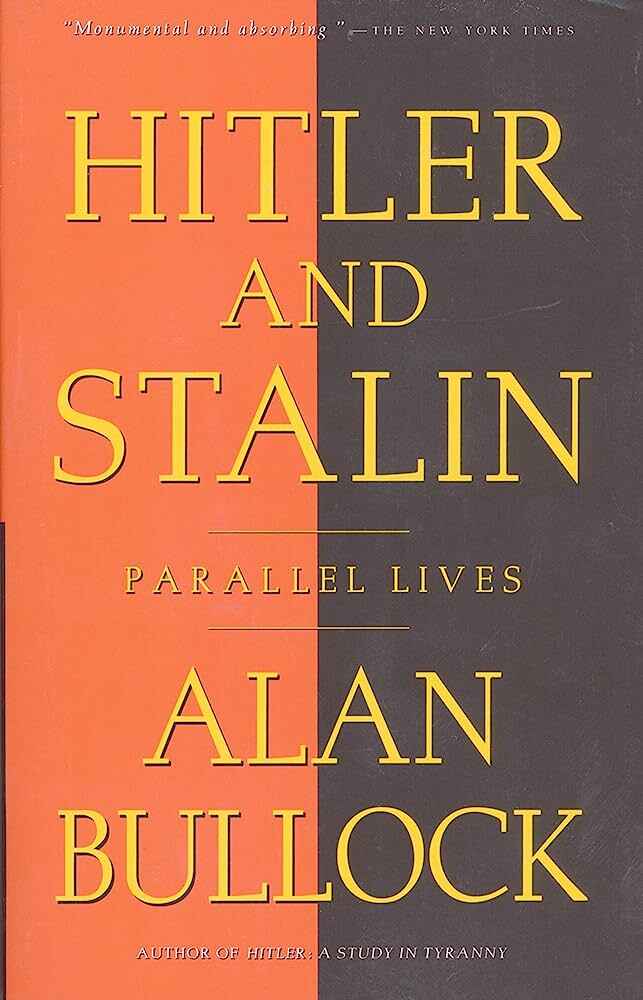
Or find a unique angle
If you don’t have a particular theme to explore, finding a distinct angle on your subject’s story can also help you distinguish your work from other biographies or existing works on the same subject.
Plenty of biographies have been published about The Beatles 一 many of which have different focuses and approaches:
- Philip Norman's Shout is sometimes regarded as leaning more towards a pro-Lennon and anti-McCartney stance, offering insights into the band's inner dynamics.
- Ian McDonald's Revolution in the Head closely examines their music track by track, shifting the focus back to McCartney as a primary creative force.
- Craig Brown's One Two Three Four aims to capture their story through anecdotes, fan letters, diary entries, and interviews.
- Mark Lewisohn's monumental three-volume biography, Tune In , stands as a testament to over a decade of meticulous research, chronicling every intricate detail of the Beatles' journey.

Finally, consider that biographies are often more than recounting the life of a person. Similar to how Dickens’ Great Expectations is not solely about a boy named Pip (but an examination and critique of Britain’s fickle, unforgiving class system), a biography should strive to illuminate a broader truth — be it social, political, or human — beyond the immediate subject of the book.
Once you’ve identified your main focus or angle, it’s time to write a great story.
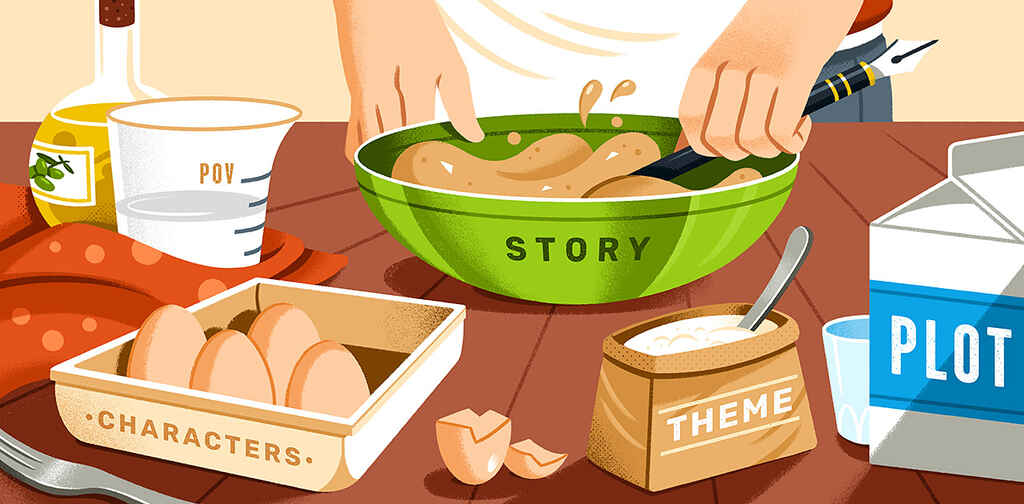
While biographies are often highly informative, they do not have to be dry and purely expository in nature . You can play with storytelling elements to make it an engaging read.
You could do that by thoroughly detailing the setting of the story , depicting the people involved in the story as fully-fledged characters , or using rising action and building to a climax when describing a particularly significant milestone of the subject’s life.
One common way to make a biography interesting to read is starting on a strong foot…
Hook the reader from the start
Just because you're honoring your character's whole life doesn't mean you have to begin when they said their first word. Starting from the middle or end of their life can be more captivating as it introduces conflicts and stakes that shaped their journey.
When he wrote about Christopher McCandless in Into the Wild , author Jon Krakauer didn’t open his subject’s childhood and abusive family environment. Instead, the book begins with McCandless hitchhiking his way into the wilderness, and subsequently being discovered dead in an abandoned bus. By starting in the middle of the action in medias res, Krakauer hooks the reader’s interest, before tracing back the causes and motivations that led McCandless to die alone in that bus in the first place.

You can bend the timeline to improve the reader’s reading experience throughout the rest of the story too…
Play with flashback
While biographies tend to follow a chronological narrative, you can use flashbacks to tell brief stories or anecdotes when appropriate. For example, if you were telling the story of footballer Lionel Messi, before the climax of winning the World Cup with Argentina, you could recall when he was just 13 years old, giving an interview to a local newspaper, expressing his lifelong dream of playing for the national team.
Used sparsely and intentionally, flashbacks can add more context to the story and keep the narrative interesting. Just like including dialogue does…
Reimagine conversations
Recreating conversations that your subject had with people around them is another effective way to color the story. Dialogue helps the reader imagine the story like a movie, providing a deeper sensory experience.

One thing is trying to articulate the root of Steve Jobs’ obsession with product design, another would be to quote his father , teaching him how to build a fence when he was young: “You've got to make the back of the fence just as good looking as the front of the fence. Even though nobody will see it, you will know. And that will show that you're dedicated to making something perfect.”
Unlike memoirs and autobiographies, in which the author tells the story from their personal viewpoint and enjoys greater freedom to recall conversations, biographies require a commitment to facts. So, when recreating dialogue, try to quote directly from reliable sources like personal diaries, emails, and text messages. You could also use your interview scripts as an alternative to dialogue. As Tom Bromley suggests, “If you talk with a good amount of people, you can try to tell the story from their perspective, interweaving different segments and quoting the interviewees directly.”

FREE COURSE
How to Write Believable Dialogue
Master the art of dialogue in 10 five-minute lessons.
These are just some of the story elements you can use to make your biography more compelling. Once you’ve finished your manuscript, it’s a good idea to ask for feedback.
If you’re going to publish your own biography, you’ll have to polish it to professional standards. After leaving your work to rest for a while, look at it with fresh eyes and edit your own manuscript eliminating passive voice, filler words, and redundant adverbs.

Then, have a professional editor give you a general assessment. They’ll look at the structure and shape of your manuscript and tell you which parts need to be expanded on or cut. As someone who edited and commissioned several biographies, Tom Bromley points out that a professional “will look at the sources used and assess whether they back up the points made, or if more are needed. They would also look for context, and whether or not more background information is needed for the reader to understand the story fully. And they might check your facts, too.”
In addition to structural editing, you may want to have someone copy-edit and proofread your work.

MEET EDITORS
Polish your book with expert help
Sign up, meet 1500+ experienced editors, and find your perfect match.
Importantly, make sure to include a bibliography with a list of all the interviews, documents, and sources used in the writing process. You’ll have to compile it according to a manual of style, but you can easily create one by using tools like EasyBib . Once the text is nicely polished and typeset in your writing applications , you can prepare for the publication process.
In conclusion, by mixing storytelling elements with diligent research, you’ll be able to breathe life into a powerful biography that immerses readers in another individual’s life experience. Whether that’ll spark inspiration or controversy, remember you could have an important role in shaping their legacy 一 and that’s something not to take lightly.
Continue reading
Recommended posts from the Reedsy Blog

Man vs. Society: The Most Relatable Conflict in Literature
What is man vs. society in narrative? Learn all about this very relatable conflict with examples from books and movies.

Man vs. Technology: Media's Most Frightening Conflict
Killer robots, sentient AI, and more: learn all about the man vs. technology conflict and how it manifests in these examples.

Man vs. Self: The Ultimate Inner Conflict in Literature
We’re diving into man vs. self, the ultimate storytelling conflict. We’ll explore examples from film and literature, and share a few writing tips to help you master this internal conflict in your own stories.

Man vs. Supernatural: The Most Imaginative Conflict in Literature
From mutant spiders to demons, let's explore man vs. supernatural conflict in literature with some otherworldly examples from narrative.

Man vs. Man: The Most Popular Conflict in Literature
We explore man vs. man conflict in writing, featuring literary examples and practical tips for incorporating it into your own stories.

Man vs. Fate: A Timeless Conflict in Literature
Sometimes, destiny seems to stand between a character and their goal. Let’s dive into the classic man vs. fate conflict in literature, with some compelling examples from well-known narratives.
Join a community of over 1 million authors
Reedsy is more than just a blog. Become a member today to discover how we can help you publish a beautiful book.

We made a writing app for you
Yes, you! Write. Format. Export for ebook and print. 100% free, always.

1 million authors trust the professionals on Reedsy. Come meet them.
Enter your email or get started with a social account:
How to Write a Biography: 11 Step Guide + Book Template

So you’d like to know how to write a biography. We can help with that! Learning how to write a biography doesn’t have to be intimidating. In fact, it can be a lot of fun!
In this guide, we show you how to write a biography from the initial book idea all the way through to publishing your book , and we throw in a free template to help you on your way.
Ready to learn how to start a biography ? Let’s jump right in.

Get Our 6″ x 9″ Pre-Formatted Book Template for Word or Mac
We will send you a Book Template for US Trade (standard paperback size).
How to Write a Biography in 11 Simple Steps
Here are the steps you need to take to learn how to write a biography:
1. Read other biographies
Austin Kleon, Author of Steal Like an Artist , says “the writer tries to master words. All of these pursuits involve the study of those who have come before and the effort to build upon their work in some way.”
In other words, if you want to learn how to write a biography, you need to read the best biographies written by other excellent authors!
In this case, it would behoove you to read several biographies – whether historical, celebrity, or business biographies is up to you and your sub-genre.
A good author to start with? Walter Isaacson . He’s written highly acclaimed biographies on everyone from Abraham Lincoln and Steve Jobs to Leonardo Da Vinci and Elon Musk.
Once you’ve read some well-crafted biographies, you’ll have a better idea of how to start a biography of your own.
2. Identify your subject
In order to learn how to start a biography, you need to choose who you’d like to write about – if you don’t already have someone in mind.
The most important factor will be, of course, your interest in the person you’re planning to write about. You’ll spend months (or even years) deep-diving into this person’s history, so you want to choose someone who you’re unlikely to tire of.
When learning how to write a biography, here are few factors to consider:
- How impactful has your potential subject’s life been? In other words, will people care to learn more about this person?
- How readily available is information about your potential subject? Biographies require extensive research, so it’s critical to choose someone who has enough information out there to dig into! Consider whether your subject has done interviews, written journals, has family or a partner willing to speak with you, and more.
- Are there already books written about your potential subject? Just because there’s an existing biography about the person you’re interested in doesn’t (necessarily) mean you can’t write another one. But if there are two or three biographies, you may want to reconsider. If you do choose to write about someone who has already been well-documented, be mindful about approaching the topic with a new angle or perspective. For instance, there are several biographies about George Washington, but author Alexis Coe wrote one about how Washington isn’t “quite the man we remember.” This brilliant iteration has over 12,000 ratings on Goodreads .
- Is there a market demand for a book about your potential subject? If you’re learning how to write a biography, you need to be mindful of whether folks will want to read it. Do some research to determine if readers will be receptive to a book about the person you’re interested in.
Related: Is a Biography a Primary Source?
3. Get permission to write about your subject
We’ll start by stating the obvious. It’s a good idea to get permission to write about your subject, even if you’re not legally required to. For one thing, it’s just good manners. Plus, you’re much more likely to get unfettered access to the information and sources you need to write your book.
But do you have to get permission? It depends.
In some cases, if your subject is considered a “public figure,” permission may not be required. The definition of a public figure varies depending on your jurisdiction, so you should always consult a lawyer before writing a biography.
If you do decide to proceed without permission, be mindful of how your book will be received and any legal issues that may arise. That’s why we always recommend asking permission from your subject when learning how to write a biography.
- Difference Between A Memoir and Biography
- Autobiography vs Biography: Differences and Similarities
4. Create an outline
The next step of learning how to write a biography is to outline your story. It’s critical to outline your biography before you begin writing it. Among other things, it helps ensure you cover every topic you’d like to and get the book in the correct chronological order. It also helps you identify themes that emerge as you organize your ideas.

Need help creating your outline? Learn how to do it (and take advantage of free templates!) in our guide to outlining a book .
5. Select a working title (using a title generator)
Now is the fun part of learning how to write a biography! It’s time to create a working title for your book. A working title is just what it sounds like: it’s a title that works – for now.
Of course, it’s helpful to have something to call the book as you’re working on it. And it encourages you to think about the message you’d like your book to convey. When your biography is complete, you can always do a little more research on how to write book titles for your specific sub-genre and update your working title accordingly.
Or, you can decide you still love your initial title and publish your book with that one!
We’ve made it easy for you to develop a working title – or multiple – using our book title generator .
Book Title Generator
Don't like it?
6. Write a rough draft
Okay, now it’s time to start writing your rough draft. Don’t be intimidated; just focus on getting something down on the page. As experts on all things writing and self-publishing, we’ve got a rough draft writing guide to help you get through this phase of writing a biography.
Remember to be as balanced and objective as possible when learning how to write a biography.
Make good use of your primary and secondary sources, and double-check all of your facts. You’ve got this!
7. Self-edit
There are several different types of editing that we recommend each manuscript undergo. But before you give your rough draft to anyone else to review, you should edit it yourself.
The first step to self-editing?
Take a break! It’s essential to give your mind some time to recuperate before you go over your work. And never self-edit as you go!
After you’ve completed your break, here are a few things to consider as you edit:
- Grammar. This one is self-explanatory and usually the easiest. You can use an AI editor to make a first pass and quickly catch obvious spelling errors. Depending on prompts and your experience with the tool, you can also use AI to catch some grammar and syntax issues as well.
- Content and structure . This is the time to make sure the bones of your piece are good. Make sure your content flows logically (and in chronological order), no important pieces of information are missing, and there isn’t redundant or unhelpful information.
- Clarity and consistency. Keep an eye out for any confusing copy and ensure your tone is uniform throughout the book.
- Try reading your draft aloud. You’d be surprised at how many errors, shifts in tone, or other things you’d like to change that you don’t notice while reading in your head. Go ahead and do a read-through of your draft out loud.
8. Work with an editor
Once you’ve created the best draft you can, it’s time to hire an editor . As we mentioned, there are multiple types of book editing, so you’ll need to choose the one(s) that are best for you and your project when learning how to write a biography.
For instance, you can work with a developmental editor who helps with big-picture stuff. Think book structure, organization, and overall storytelling. Or you might work with a line editor who focuses on grammar, spelling, punctuation, and the like.
There are also specialized copy editors, content editors, fact-checkers, and more.
It’s in your best interest to do a substantial amount of research before choosing an editor since they’ll have a large impact on your book. Many editors are open to doing a paid trial so you can see their work before you sign them on for the entire book.
9. Hire a book cover designer
Once you’ve worked with your editor(s) to finalize your book, it’s time to get your book ready to go out into the world. So the next step in learning how to write a biography is to hire a book cover designer to create a cover that grabs readers’ attention (pssst: did you know that all SelfPublishing authors get done-for-you professional book design? Ask us about it !).
10. Get an ISBN
The next step in learning how to write a biography is getting an ISBN number for your book – or an International Standard Book Number. It’s a unique way to identify your book and is critical for ordering, inventory tracking, and more.
Bear in mind that each rendition of your book – regardless of when you publish them – will need their own ISBN numbers. So if you initially publish as a softcover and hardcover book and then decide to publish an ebook with the same exact content, you’ll need 3 total ISBN numbers.
To get an ISBN, head to ISBN.org and follow the steps they provide. Or reference our guide right here for step-by-step instructions (complete with photos) on how to get an ISBN number for self-published books.
11. Create a launch plan
Now is the most exciting part of learning how to write a biography. It’s time to get your book out into the world! You’ll need to map out your plan, schedule events , finalize your pricing strategy, and more.
And you can’t just launch your book in a single day. When you go through all the work of learning how to write a biography, you want your book to succeed – and that requires a strategic marketing plan . Luckily, we have an entire guide to launching a book to help you figure it out.

Get your free book template!
Learning how to write a biography can be challenging, but when you have a clear plan and guidance, the process is much easier. We’ve helped thousands of aspiring authors just like you write and self-publish their own books. We know what works – and how to become a successfully published author faster.
Take the first step today and down the book template below!
And, if you need additional help with learning how to write a biography, remember that we’re standing by to assist you. Just schedule a book consultation and one of our team members will help answer any of your questions about the writing or self-publishing process.

- Learn How to Write a Biography: A Step-by-Step Guide.
- Self Publishing Guide
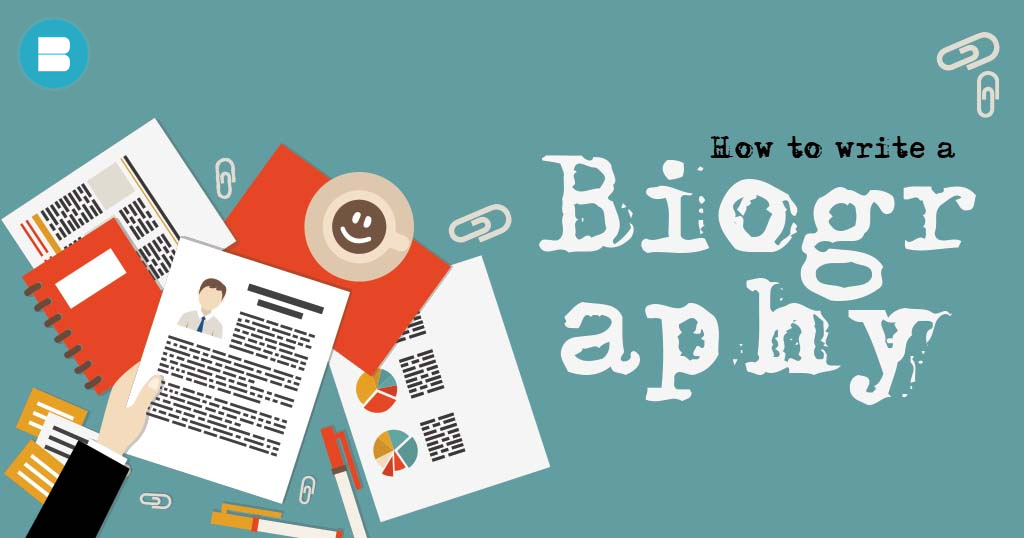
Human lives are intricate tapestries woven with experiences, emotions, challenges, and triumphs. Biographies and autobiographies serve as windows into these remarkable stories, offering insight into the lives of individuals who have left their mark on history or those who wish to chronicle their own journeys.
I n this guide, we will explore the art of writing biographies and autobiographies, delving into the nuances of both genres and providing valuable tips on how to craft compelling narratives.
Understanding Biography and Autobiography
- Biography: Exploring Lives Beyond the Surface A biography is a literary exploration that unveils the intricate layers of a person’s existence, transcending the mere listing of events. It provides a comprehensive account of an individual’s life, offering insights into their achievements, struggles, societal impact, and distinct qualities that define them. These narratives serve as windows into history, allowing readers to traverse time and understand the legacy left by remarkable individuals. Biographies are usually crafted by biographers, individuals skilled in research and storytelling. They undertake a meticulous journey of gathering information from diverse sources, such as historical records, interviews, letters, and secondary literature. The biographer’s role is to curate these fragments of information into a coherent narrative, painting a vivid portrait of the subject. This comprehensive approach lends credibility and depth to the portrayal, enriching the reader’s understanding of the subject’s contributions and character. Example: Consider the biography of Mahatma Gandhi. A biographer compiling his life story would explore not only his role in India’s fight for independence but also his principles of nonviolence, his experiments with truth, and his impact on the world’s political landscape. By presenting a holistic view of Gandhi’s life, the biography reveals the nuances of his personality, beliefs, and the larger context in which he operated.
- Autobiography: The Intimate Dialogue of Self-Discovery An autobiography is a narrative journey undertaken by the subject themselves—a profound sharing of one’s life experiences, emotions, and reflections. This genre provides readers with an intimate insight into the subject’s psyche, allowing them to witness their life’s trajectory through personal recollections. Autobiographies carry a unique authenticity, as they are composed from the vantage point of the person who lived those moments, providing a firsthand account of their journey. Autobiographies draw from the subject’s reservoir of memories, emotions, and introspections. This self-exploration leads to a narrative that is often more than a linear chronicle; it becomes a tapestry woven with the threads of emotions, thoughts, and personal revelations. By directly communicating with the reader, the autobiographer creates a powerful connection, allowing readers to step into their shoes and experience their story from within. Example: A notable example of an autobiography is “The Diary of a Young Girl” by Anne Frank. Written during her time in hiding during World War II, the book offers a candid portrayal of Anne’s life, fears, hopes, and dreams. Through her own words, readers gain a deep understanding of the challenges faced by Jews during the Holocaust, as well as the resilience and humanity that Anne exudes even in the face of adversity.
You may also like: How to Publish a Book | Publish your book | BlueRoseOne
Writing a Biography:
Research: The Foundation of a Compelling Biography Thorough research is the cornerstone of a captivating biography. Delve into reputable sources like books, articles, interviews, and archives to gather a comprehensive view of your subject’s life. By immersing yourself in these materials, you gain insights into their experiences, motivations, and contributions. Scrutinise the historical context to understand the era’s impact on their journey. Successful research forms the bedrock of your biography, enabling you to present an accurate and nuanced portrayal that resonates with readers. It’s through meticulous research that you uncover the hidden stories and connect the dots, allowing the subject’s essence to shine through the pages.
Selecting a Focus: Defining the Narrative Scope Choosing a focal point is essential for a well-structured biography. Decide whether to cover the subject’s entire life or concentrate on specific periods or achievements. This decision shapes the narrative’s trajectory, preventing it from becoming overwhelming or disjointed. A focused approach allows you to delve deeply into pivotal moments, providing a more profound understanding of the subject’s journey. By clarifying the scope, you enable readers to follow a coherent storyline, making it easier for them to engage with the subject’s life in a meaningful way.
Structuring the Biography: Chronology and Themes The organisation of your biography greatly impacts its readability. Structure your work into logical sections or chapters, employing either a chronological or thematic arrangement. Begin with an engaging introduction that captures readers’ attention and provides essential context. A chronological structure follows the subject’s life in sequential order, offering a clear timeline of events. Alternatively, a thematic structure groups events by themes, allowing you to explore different facets of the subject’s life. A well-structured biography guides readers smoothly through the subject’s experiences, fostering a deeper connection and understanding.
Show, Don’t Tell: Evocative Storytelling Vivid descriptions, anecdotes, and quotes breathe life into your biography. Rather than merely listing facts, employ descriptive language to recreate scenes and emotions, allowing readers to immerse themselves in the subject’s world. Use anecdotes to illustrate key moments, capturing the essence of the subject’s character and the impact of events on their journey. Integrating quotes from the subject, contemporaries, or relevant sources adds authenticity and depth. Through this technique, you transport readers into the subject’s experiences, enabling them to witness the moments that shaped their lives.
Balanced Perspective: Portraying Strengths and Flaws A balanced portrayal adds credibility and depth to your biography. While it’s tempting to focus solely on accomplishments, a well-rounded view includes the subject’s strengths and flaws. This authenticity humanises the subject, making it relatable and multidimensional. By acknowledging both successes and challenges, readers gain a more honest understanding of their journey. Balancing positives and negatives helps readers empathise with the subject, connecting them on a deeper level and offering a more genuine insight into their lives.
Engaging Emotions: Creating Emotional Resonance Emotions are a potent tool in biography writing. Delve into the subject’s feelings, struggles, and aspirations to create an emotional connection with readers. By tapping into their emotional experiences, you make the narrative relatable and engaging. Sharing personal challenges and triumphs allows readers to empathise and reflect on their own lives. This emotional resonance elevates the biography from a mere factual account to a compelling and moving story that lingers in readers’ minds, leaving a lasting impact.
Citing Sources: Ensuring Accuracy and Credibility Accurate information is vital in biography writing. Properly cite your sources to maintain credibility and integrity. Clear citations not only lend authority to your work but also provide readers with the opportunity to explore further if they desire. Accurate referencing safeguards against misinformation and ensures that your portrayal is based on reliable evidence. In addition to enhancing your credibility, thorough citations demonstrate your commitment to thorough research and ethical writing practises, contributing to the overall trustworthiness of your biography.
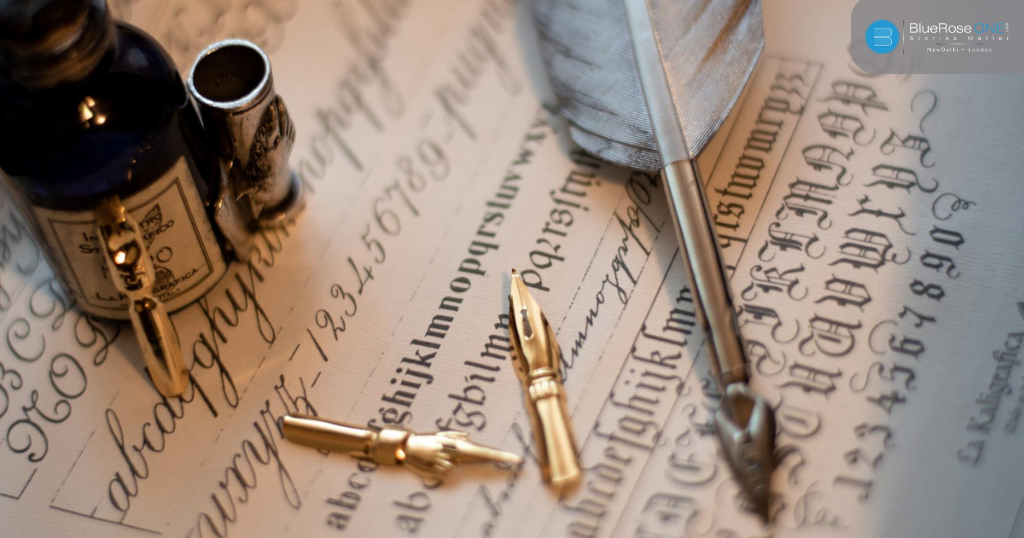
Complete Guide to Write a Biography. Start Writing Your Biography Now
Writing an Autobiography:
Reflecting on Significant Moments and Experiences Initiating an autobiography involves introspection into your life’s pivotal moments. Delve into memories that have influenced your journey, such as turning points, challenges, relationships, and achievements. Reflect on these experiences, dissecting their impact on your personal growth and development. By contemplating these key events, you gain insight into the narrative threads that weave your life story together. This reflective process sets the foundation for an authentic autobiography that resonates with readers on a profound level.
Developing Your Unique Voice and Tone Crafting an autobiography demands a consistent voice and tone that reflect your personality. Write in a way that feels true to you, capturing your unique perspective and emotions. Authenticity is key, as it allows readers to connect with your narrative on a personal level. Whether your tone is introspective, humorous, or contemplative, ensure it aligns with the essence of your experiences. By embracing your genuine voice, you create an autobiography that not only tells your story but also conveys the essence of who you are.
Structured Storytelling for Engagement While autobiographies can be more flexible in structure compared to biographies, organising your narrative into coherent sections or themes enhances its readability. By grouping related experiences together, you provide readers with a clearer understanding of the themes that have shaped your life. This structure helps maintain their engagement by guiding them through your journey in a logical and compelling manner. While allowing for creativity, a structured approach ensures that your autobiography remains focused and accessible.
Embracing honesty and authenticity Honesty is the bedrock of an impactful autobiography. Share not only your triumphs but also your mistakes and failures. Authenticity creates relatability, allowing readers to connect with your humanity and vulnerabilities. Your journey’s challenges and setbacks are just as integral to your story as your successes. By being candid about your experiences, you demonstrate resilience and growth, inspiring readers to reflect on their own paths. This level of authenticity fosters a deeper connection, making your autobiography a source of empathy and encouragement.
Adding Depth Through Reflection Incorporate reflection to imbue your autobiography with depth and meaning. Explore the lessons you’ve learned from your experiences and the transformations they’ve prompted. Delve into how these moments shaped your beliefs, values, and perspective on life. By offering insights gained from introspection, you provide readers with wisdom and a broader understanding of your journey. Reflection transforms your autobiography from a chronicle of events into a thoughtful exploration of personal growth and the profound impact of life’s moments.
Creating vivid details for immersion Immerse readers in your world by employing sensory details and vivid descriptions. Paint a picture with words, allowing readers to visualise the scenes and emotions you’re describing. By incorporating sensory elements like sights, sounds, smells, and feelings, you transport readers into the moments you’re recounting. This immersive experience draws them closer to your story, fostering a stronger connection. Vivid details not only make your autobiography more engaging but also enable readers to forge a deeper connection with your experiences and emotions.
In the realm of literature, biographies and autobiographies stand as powerful testaments to the diversity and richness of human existence. Whether you’re capturing the life of a historical figure or penning your own life story, the art of writing these genres involves meticulous research, introspection, and a keen understanding of human emotions.
Through carefully chosen words and evocative storytelling, biographers and autobiographers alike can craft narratives that resonate with readers and offer a deeper understanding of the human experience. So, whether you’re writing about the extraordinary or the everyday, embrace the challenge and privilege of narrating lives through the written word.
Publish your book with BlueRoseONE and become a bestselling author . Don’t let your dream of becoming an author fade away, grab the opportunity now and publish your book – be it fiction, non fiction, poetry or more.
- About The Author
- Latest Posts
Mansi Chauhan

You May Also Like

7 Killer Tips for How to Write a Bio
by Pamela Fernuik | 30 comments
Whether you're starting your author website, setting up social media profiles, or submitting stories or articles to a publication, you're going to need an author bio.
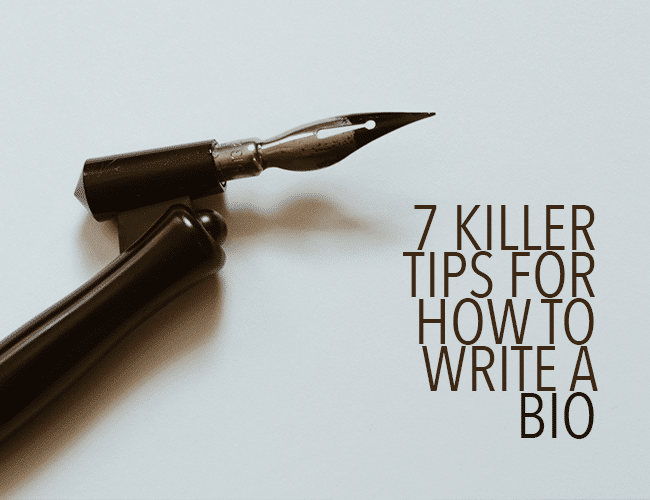
Writing your biography can seem almost as challenging as writing a book. But it is a necessary part of publishing your writing. Let's look at how to write a bio that delivers.
How to Write a Bio
- Write your name
- Share your accomplishments
- Use third person
- Say something personal
- Link to your writing
- Follow the rules
Where to Find Author Bio Examples
A good place to find examples of other writers' biographies is right here on The Write Practice. You can meet the Write Practice team on the About page . The Write Practice also includes bio examples with all guest posts (you can click on any post on this page to read the author's bio).
If you're writing a bio for your resume or a cover letter for a professional role, some of the tips here will work, but you'll want to make sure you look at examples in the field where you're applying.
Let me share with you seven tips on how to write a bio and some personal bio examples to get you started.
7 Killer Tips for How to Write a Bio (Including More Examples)
Let me share with you seven tips on how to write a bio and some bio templates to get you started.
1. Write your name
Start with your name. Might seem obvious, but you want to make sure readers know who you are.
2. Share your accomplishments
Don't be shy. Say what you have done.
A list of accomplishments might include things like where you went to school and where you have been published. If relevant, you can include your professional experience or current role. This is not a time to brag or list every award you won since grade two. Pick the major accomplishments that are relevant and recent.
For example:
Mary Jones, a graduate of ____________, has been published in____________ and ______________.
If this is your first publication, you can say:
Mary Jones writes about ________________ and ______________.
3. Use third person
For author bios, write in the third person, even if you are the one writing it. First-person bios are rare and not the industry standard.
Instead of saying, “I have lived in Tokyo and have six cats,” say, “Pamela has lived in Tokyo and has six cats.”
4. Say something personal
Well-written bios end with a personal statement about you. There's not room to tell your life story or share too many personal details, but including a personal detail or two shows readers you are a real person beyond the written page. See the ending of the following examples.
Here is Stephen King's biography from the back of his book On Writing . It has 65 words.
Stephen King is the author of more than fifty books, all of them worldwide bestsellers. Among his most recent are 11/22/63 , Under the Dome , Lisey’s Story , Duma Key , Cell , Dreamcatcher , Hearts in Atlantis , and Bag of Bones . He was the recipient of the 2003 National Book Foundation Medal for Distinguished Contribution to American Letters. He lives in Maine with his wife, novelist Tabitha King.
Stephen King’s biography begins with his name and then lists his professional life accomplishments. But it ends with a note about his personal life. Now you know that he lives in Maine and his wife is a novelist. This helps you to connect with him as a regular human being, not just a very accomplished celebrity.
(His biography is long, though. If you were Steven King, and they said, “Mr. King, you have only fifty words,” what would you take out?)
Or read this biography from the back of The War of Art by Steven Pressfield. This one is 42 words.
Steven Pressfield is the author of Gates of Fire, Tides of War, The Afghan Campaign, The Profession, The Warrior Ethos and Turning Pro, among others. He lives in Los Angeles. In 2003, he was made an honorary citizen of Sparta in Greece.
If I wanted to know what books Steven Pressfield wrote, I could look up his page on Amazon. But I would not know to look up whether he was made an honorary citizen of Sparta in Greece. That's an interesting relevant detail based on some of the writing he's done.
Take a look at this one, from the back inside cover of Jon Acuff’s book Finish . This has 49 words.
Jon Acuff is the New York Times bestselling author of Start , Quitter , and Do Over , among other books. He is a popular public speaker, blogger, Tweeter, and the creator of the “30 Days of Hustle” online challenge. He lives in Nashville with his wife, Jenny, and their two daughters.
Jon Acuff's biography tells me about his accomplishments. Then it ends with a note about his family. It is a good idea to share a piece of personal information about yourself so readers can connect with you.
5. Be funny
Include humor if it fits your writing and the publication you are submitting to. Remember, you don’t want to make off-color jokes in your biography, so pretend your mother is reading it.
Unless, of course, it is for an adult magazine. Then you can write humor that fits that publication. Keep your target audience in mind, knowing that humor is highly contextual.
6. Link to your writing
Use only one link. Decide what is the most important place you want your readers to find you. Twitter? Instagram? Your website signup list?
If you only have one link, have it go to your website signup page. An email list is the most important, as it gives you direct access to make friends with your readers. You own your website (we hope!); you don’t own Twitter, Instagram, or Facebook. Social media platforms are great for connecting with readers, but it's good to keep in mind that they can change their rules any time and that can affect your access to your target audience.
7. Follow the rules
Follow the rules. If the publication or bio instructions ask for a fifty-word biography, don’t give them 324 words. Stick to fifty. If there's a character limit, follow it. Don't jeopardize your chances of publication because you won't follow through on your author bio.
Bonus Tip: Be Yourself
It can seem intimidating to write a killer bio. But you are a writer. You have already written an article or story so amazing that someone wants to publish it.
You can write a fantastic bio, too.
Now You Try
It's a good idea to try out a few different bios for different target audiences. Mix and match professional accomplishments and personal experiences until you have a blend that really captures you and your writing style.
You can practice using a conversational tone and then a more formal tone. See which one fits the audience or market you have in mind. Share them with your writing friends or on your social media accounts to boost engagement and see which one your target audience likes most.
Keep cutting extraneous details until you have a killer bio that represents you, and then polish and edit until it shines.
The handy template above and your own brilliant writing are all you need!
Do you have any tips for how to write a bio? Let us know in the comments .
Take fifteen minutes to write a fifty-word biography. This is the length of biographies Alice, my editor, asks for on The Write Practice.
What will you include in your biography? Share the bio you write in the Pro Practice Workshop. Tell us what you cut and why.
Please read other readers' biographies and help them write a clear biography.
Pamela Fernuik
Pamela writes stories about art and creativity to help you become the artist you were meant to be. She would love to meet you at www.ipaintiwrite.com .
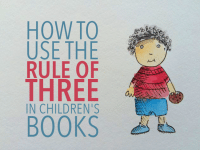
30 Comments
Dawn Van Beck, an advocate for vulnerable adults and a chocolate chip cookie connoisseur, writes inspirational stories and devotions, and has been published in Short Fiction Break. Currently working on her debut romance novel, she resides in Florida with her husband and feisty dachshund. You can find her at http://www.findingfaithinthefabric.com .
Great bio, Dawn. I love that it has a light-heartedness. Heading to your website now 🙂
I like your bio. You are really smart.
Hi Dawn, Love that you showed your fun personality as well as what you write, and where your heart is. xo Pamela
Hi Dawn, I agree with Pamela Hodges, job well crafted.
I have a question. I’ve wondered about it for awhile and I’m a bit hesitant in asking, but…
Is is possible to be anonymous? Like, if you published a novel, can you write under a fake name and not have too many people know exactly who you are?
Yes. I do, but I also have a biography for the pen name I use, which is admittedly way more than 50 words long
Hi EmFairley, What a great idea to have a biography with your pen name. xo Pamela And of course you are not going to share it, because it is anonymous. 🙂
A biography is best written by an outsider or at least to be read that way as in POV 3rd voice. It sounds cool to use a pen name.
Hi Pamela. Your 7-step formula is typical of bio after bio after bio. As writer’s we should let the reader know they’re in for a great read. Writing a mechanical bio doesn’t give them much to go on. Here’s some food-for-thought from my 1-day bio course…
1. Don’t put your name at the start for two reasons. Firstly, bio’s are likely to be set within the context of the author anyway, so no point wasting words repeating it. Secondly, if the name should be included – perhaps because it’s to be read in isolation – it has more impact at the end; this is because a) people will remember it more after reading something interesting, and b) a great bio should create tension so the reader WANTS to know who this is.
2. Don’t waste valuable words boring the reader LISTING your accomplishments. Most authors have them, so they won’t make you stand out. And few readers would know the difference between a credible one and a valueless one. And people with truly epic accomplishments, like Stephen King, don’t need to flourish being a 50-times best-seller. By all means, roll your best one into the conversation, just don’t be mechanical.
3. Third person is good for not sounding like it’s an ego trip, but a much better way IS to be in first person and use the bio to connect with the reader. Use humour (your point 5) and open up to them, making sure your comments are directed at THEM (i.e. use ‘you’) to show you care about THEM.
4. Be personal – right! But more than that, make sure you’re saying something relevant TO the reader. Make them feel your reaching out to THEM and not the masses.
5. Yes. I’ve covered that above.
6. Yes, although don’t waste the words if you’ve already put the links on the page in other fields, which is common.
7. Definitely.
8 (added) – Tailor it for the location. Note just word count, but voice. If it’s for a funky radio show for e.g., check out the lingo and match the style.
Hope that helps unlocks a whole new way of thinking about bios and standing out from the crowd. If you get it right, the results speak for themselves.
Here’s an example of one of mine used for my first series of fantasy books:
“My goal is a story that pulls you in. A story you want to keep reading, as powerful as I can make, with characters real and compelling. Some are heroes with flaws, others are weak with hidden strengths. They stand against a hidden enemy. Not all of them want to…”
Miles Allen
Here’s a link to my blog on writing business bios. It’s a different angle, but much of it will translate to creating a more penetrating author bio too.
http://www.milesallen.net/why-your-business-biography-is-killing-sales/
Prince Ydnar Velonza is a frustrated writer and blogger. He loves to eat chocolate whenever he’s alone. Prince Ydnar is editing a book that will be publish soon.
Hello Prince Ydnar Velonza, Right now you have 28 very well written words, I just switched a few words in the last sentence.
“Prince Ydnar Velonza is a frustrated writer and blogger. He loves to eat chocolate whenever he’s alone. Prince Ydnar is editing a book that he will publish soon.”
Can you think of anything else to include? You have the personal element down with the chocolate and frustrated writer and blogger part. How about where you live? Or where you go to school? Any awards?
Best to you, xo Pamela
Hello Pamela. Thanks so much for your article. I was looking for something just like this and the length of a bio. It’s great to learn from famous writer’s bio; now I have an example of how to start and what to include.
Lilian Gardner was born in India. After obtaining her school diploma, she qualified as a teacher at the Teacher’s Training College.
She has written and self-published two books and is busy editing her third novel.
Lilian lives in Italy with her husband, Giuliano, an engineer and pilot, and their cat, Minnie
Unfortunately, I am two words above the word count you gave us. I started wih 220 words, and cut, cut, cut it down to 52 words. It seems scant. Please give me feedback. Thanks.
Hi Lilian, I got it down to 48 words. “Lilian Gardner was born in India. After obtaining her school diploma, she graduated from the Teacher’s Training College. She has written and self-published two books and is currently editing her third novel. Lilian lives in Italy with her husband, Giuliano, an engineer and pilot, and their cat, Minnie”
This is the sentence I changed. Did you work as a teacher after you graduated? What is the most important point in this sentence? What about —After graduating from the Teacher’s Training College she worked with elementary school children in Florence, Italy. (or wherever you worked)
“After obtaining her school diploma, she graduated from the Teacher’s Training College” And I had no idea you lived in Italy. Your cat speak Italian!! xo Pamela
Thanks, Pamela. I like your super edit. I honestly needed to know how to write a bio. Minnie is multilingual. i speak to her in English, my husband speaks to her in Italian, and my son’s girlfriend speaks to her in Slovak. Her answer never changes. it’s always ‘meow’. How is Harper and the rest of the clan doing?
Wow! Great feedback here.
SM Sierra is the author of two self-published books, Molly Blue &The Quill of Two Lives, and Molly Blue & The Thirteen Wands, she is currently working on the third book in the series. She resides in California with her mechanic husband, Milo, and her adopted crooked-tail black kitty, Coulson.
I like your post which is Informative and interesting.
Thanks for the feedback Lilian!
Hello S.M. Sierra, So nice to read your biography. I don’t know if you have to say your books are self-published. What do you think S.M.? Do we have to say how they are published? Hello to Milo and Coulson. xo Pamela
Thanks Pam, It took me a lot of time and research to learn the best way to format to create a book…it is all mine, therefore in place of a degree or background in journalism, which I do not have, I consider the writing and self publishing my accomplishments.
Hi S.M. Thank you for your perspective on this. You are right, it is an accomplishment. And great job for learning how to make your own book. I self-published my book too, and spend a lot of time as well learning how to make it. You have opened my eyes to the value of what we have learned. xo Pamela
It took her; you said it took me. I believe the (bio) should be written in POV third voice. ie;. He/she and not I.
Love the croocked – tail black kitty. Lol. .
Hi all. I’ve been told, and read, by many editors that on ocassions, the bio can be the difference between them accepting your story or someone else’s. More important than people think. Here’s mine; Justin Boote is an Englishman living in Barcelona for twenty years working as a stressed waiter in a busy restaurant. He has been writing short horror/suspense stories for two years, in which time, he has published seventeen stories in a diversity of magazines. He can be found at Facebook.
About the Author Victor Paul Scerri first works as a writer and artist published by Recovering the Self: A Journal of Hope and Healing. In recognition of his art exhibits, a Zen painting is the cover image for the April 2011 issue of the journal. He continues to publish articles at EnzineArticles.com, and is an active team writer of short stories. He made cultural award winning entrepreneur in Norway and now lives in Thailand. You can find him at http://www.nicewriters.com / nicewriters on (FB).
Victor Scerri, born in London, living in Thailand, ventured to Norway – he made cultural award-winning entrepreneur. He was published by Recovering the Self: A Journal of Hope and Healing. His art is on the cover of the April 2011 issue. He still writes and publishes with EnzineArticles.com. See: http://www.nicewriters.com .
Thank you, Marsha, for taking the time to edit my bio
(This is an edited.) Prince Ydnar Velonza is a 15 year-old student. He is a starter writer and blogger. He lives from Philippines. Velonza was awarded as salutatorian since his elementary times. Now, he is studying 4th year high school (Grade 10). He loves to play a Philippine outdoor games like “tagu-taguan” (hide and seek) especially in night, “patintero”, and “tumbang-preso”. Playing “busy apple” is the bonding of his family.
Submit a Comment Cancel reply
Your email address will not be published. Required fields are marked *
Submit Comment
Join over 450,000 readers who are saying YES to practice. You’ll also get a free copy of our eBook 14 Prompts :
Popular Resources
Best Resources for Writers Book Writing Tips & Guides Creativity & Inspiration Tips Writing Prompts Grammar & Vocab Resources Best Book Writing Software ProWritingAid Review Writing Teacher Resources Publisher Rocket Review Scrivener Review Gifts for Writers
Books By Our Writers
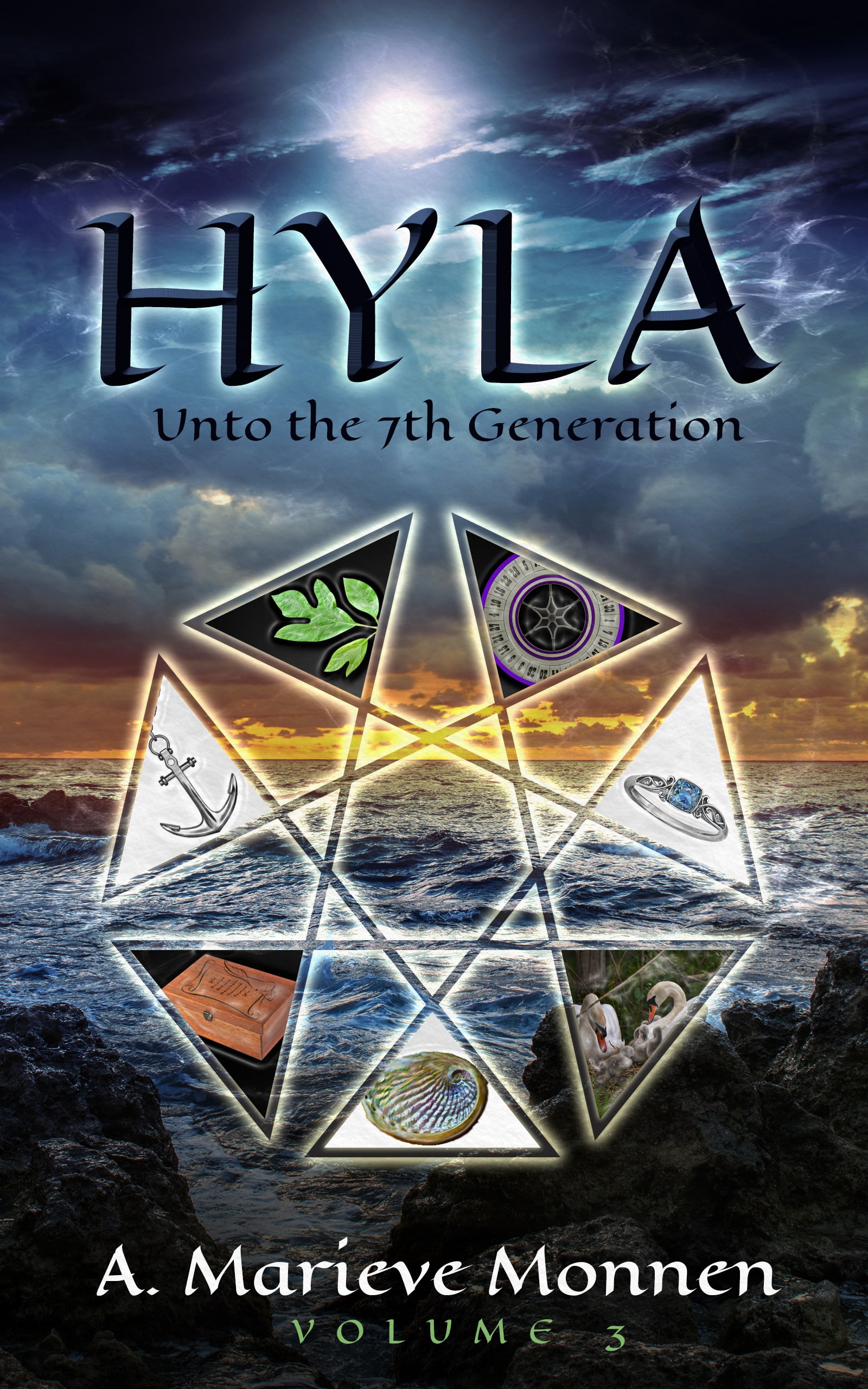
You've got it! Just us where to send your guide.
Enter your email to get our free 10-step guide to becoming a writer.
You've got it! Just us where to send your book.
Enter your first name and email to get our free book, 14 Prompts.
Want to Get Published?
Enter your email to get our free interactive checklist to writing and publishing a book.

IMAGES
COMMENTS
Those who have mastered the steps of how to write a bio spend a lot of time doing this. If you approach writing a bio like a story, you’re giving yourself the opportunity to differentiate yourself from others and truly connect with the reader. 6. Edit ruthlessly, analyze with free tools, and update constantly.
Tip 3: Add Your Own Perspective. Biographies need to be objective, but that doesn’t mean the author has to be entirely invisible. Including your own perspective can make the biography relatable and engaging. Letting your voice shine can help illustrate the subject’s character and bring their story to life.
Let’s look at the six key elements of a well-written biography more closely and the steps you can follow to develop your own. How to Write a Biography in 8 Steps Using Key Elements Choose your presentation format. Presenting your biography can take on various forms, the most traditional being written form.
1. Go for a chronological structure. Start chronologically from the subject’s birth to their death or later life. Use the timeline of the person’s life to structure the biography. Start with birth and childhood. Then, go into young adulthood and adulthood.
7. Get feedback and polish the text. If you’re going to publish your own biography, you’ll have to polish it to professional standards. After leaving your work to rest for a while, look at it with fresh eyes and edit your own manuscript eliminating passive voice, filler words, and redundant adverbs.
How to Write a Biography in 11 Simple Steps. Here are the steps you need to take to learn how to write a biography: 1. Read other biographies. Austin Kleon, Author of Steal Like an Artist, says “the writer tries to master words. All of these pursuits involve the study of those who have come before and the effort to build upon their work in ...
By acknowledging both successes and challenges, readers gain a more honest understanding of their journey. Balancing positives and negatives helps readers empathise with the subject, connecting them on a deeper level and offering a more genuine insight into their lives. Emotions are a potent tool in biography writing.
A good writing routine can make the process smoother and more enjoyable. Choose a Writing Space: Find a quiet, comfortable place free of distractions. Set a Time: Write at the same time each day to build a habit. Prepare Mentally: Take a few minutes before writing to clear your mind and focus on the task ahead.
8. Send a copy to your subject. Consider sending a copy of your manuscript to the person whose life you wrote about in your book. The copy may serve as a thank-you gift, but also, if you intend to publish your work, you will need them to approve, as well as fact check, everything you put into the story.
Let me share with you seven tips on how to write a bio and some bio templates to get you started. 1. Write your name. Start with your name. Might seem obvious, but you want to make sure readers know who you are. 2. Share your accomplishments. Don't be shy. Say what you have done.